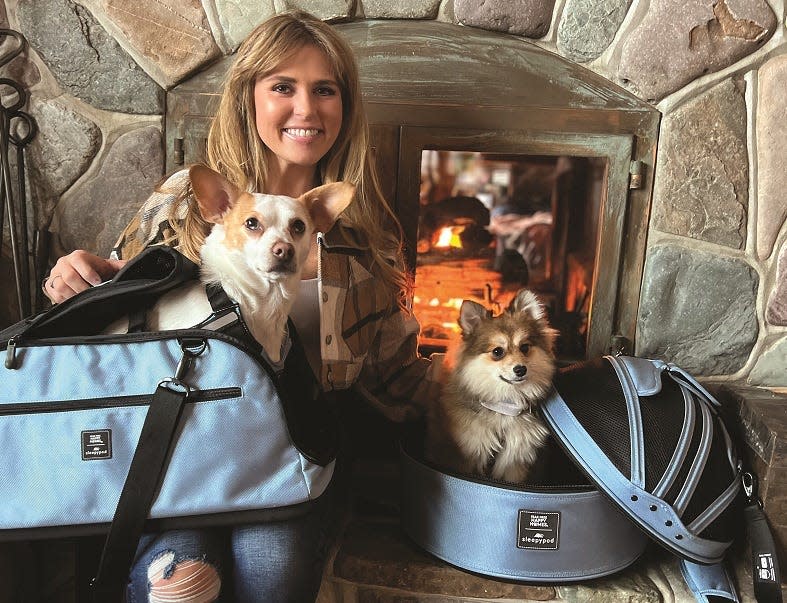Car Talk: Protect your pet during travel with these safe care travel strategies

As an animal trainer, my mission is to protect pets and people, not just from dog bites or poor training practices, but also everyday activities such as car travel. Common travel "hacks," like using zip ties, carabiner clips and seatbelts to secure crates, or practices such as allowing the pet to ride in the front seat, are particularly dangerous and may have devastating consequences. Here are safety strategies you can implement to keep furry family members safe during rides down the road.
The most important things in travel include preventing pets from escaping during entry and exit from the car or running away in the event of an accident; keeping them from roaming the car while it's in motion; and maintaining security for pets and other passengers in the event of a crash. Start with smart practices and crash-tested safety gear that safely restrains pets and provides protection.
Safety first. Avoid letting pets ride shotgun (in the front seat). Whether they're on your lap or standing on the front passenger seat, head out the window, pets are at serious risk of life-threatening injury if airbags deploy or they are flung out of the vehicle.
So where should pets ride? The safest place for pets to ride is in the back seat or cargo space (never inside the trunk) of a hatchback or SUV, especially when secured by a harness, carrier or crate. Pets such as cats or small dogs are safest in soft carriers placed on the floor of the back seat. However, note that only approved devices should be buckled in, as nonsafety-certified equipment that's strapped in poses an increased risk to pets.
Choosing equipment. Even equipment marketed for car travel may fail to protect the pet in the event of an accident if it is not used or placed correctly or hasn't been tested for safety. Injuries can occur if an unsecured carrier is catapulted from the seat or the harness or crate collapses on or crushes the pet. Unless a carrier, crate or harness has been crash-tested and approved by an organization such as the Center for Pet Safety (centerforpetsafety.org), using seatbelts to strap in carriers, booster seats or pets themselves may intensify injury to the pet and have the potential to cause severe spinal injury.
Lindsey Wolko founded the Center for Pet Safety after her own dog was injured in a car accident. The nonprofit certifies travel products that provide crash protection. For more information, visit naples.floridaweekly.com/articles/how-safe-is-your-pet-when-riding-in-the-car.
For my dogs, I've chosen the crash-tested Sleepypod carriers for smaller family members and ClickIt harnesses for bigger dogs to keep them safely in place during a drive and provide added safety in the event of a crash.
Crash-safe devices may cost more, but the protection they provide to pets and other passengers can be worth the investment. If they're not in your budget, though, consider other ways to protect pets, such as anchoring larger carriers in a vehicle's cargo area with strength-rated straps to secure connection points in the car in order to provide the best outcome in the event of an accident. Ideally, crates or carriers should be placed on a level surface for less risk that they'll tip over or slip off the seat.
Finally, be sure to take extra precautions. Always ensure that your pet is wearing current ID tags and is microchipped with up-to-date information in the event the pet escapes or is thrown out of the car after an accident. Label carriers with a card that identifies you as the owner, provides contact information for someone who can care for your pet in the event that you're incapacitated and lists contact information for the pet's veterinarian as well as any important health information.
Safe travels!
— By Mikkel Becker
Do you have a pet question? Send it to askpetconnection@gmail.com or visit Facebook.com/DrMartyBecker. Pet Connection is produced by veterinarian Dr. Marty Becker, journalist Kim Campbell Thornton, and dog trainer/behavior consultant Mikkel Becker. ©2023 Andrews McMeel Syndication
This article originally appeared on South Bend Tribune: Pet Connection: Car safety when traveling with pets

